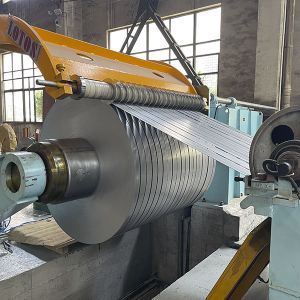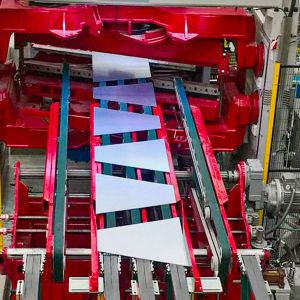Lead strip slitting line
Experience the power and reliability of our Lead Strip Slitting Line, specifically designed for cutting lead strips into narrower coils. This specialized line is equipped with advanced features to handle the unique properties of lead, ensuring accurate cuts and minimizing waste. Increase your productivity and maximize your yield with our Lead Strip Slitting Line.
Main technical parameters:
| Steel coil parameters | Material | Copper and Brass |
| Tensile strength | Max 400MPA | |
| Steel thickness | 0.3-3.0mm | |
| Steel width | 50~650mm | |
| Steel coil I.D | Φ480-Φ508 mm | |
| Steel coil O.D | Φ700mm-Φ1800mm(Max) | |
| Steel coil weight | 8T(Max) | |
| Slitter parameters | knife pivot diameter | Φ120mm |
| Knife pivot material | CR12MOV | |
| Blades specification | Φ120mm×Φ200mm×3mm | |
| Blade material | SKD11 | |
| Slit parameter | Max slit quantity | 10 strips @ T=0.5-1.0mm
|
| 6 strips @ T=1.0-2.0mm
|
||
| 4 strips @ T=3.0mm
|
||
| Width precision | ±0.05mm | |
| Other parameters | Power | 380V/50Hz/3Ph |
| Line speed | 0-180m/min | |
| Capacity | 130KW | |
| Line direction | From right to left (Face to machine)
or customerized |
|
| Machine color | Red & Grey |









